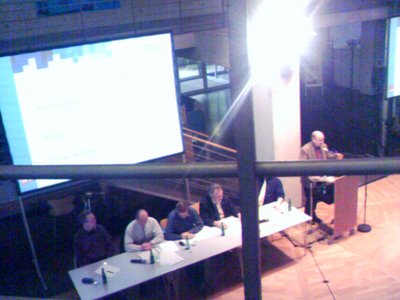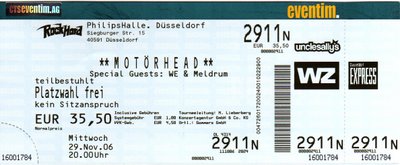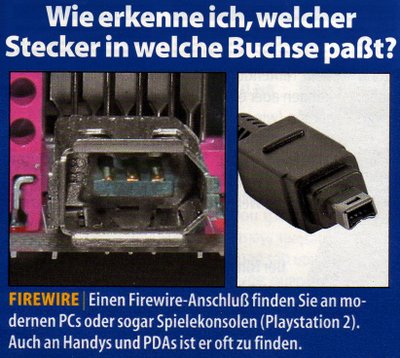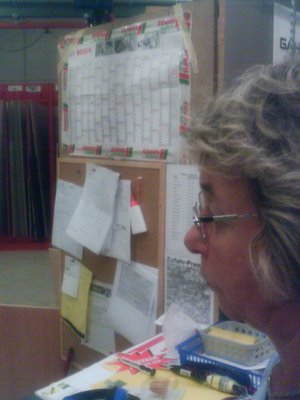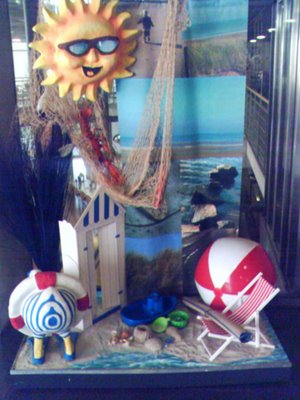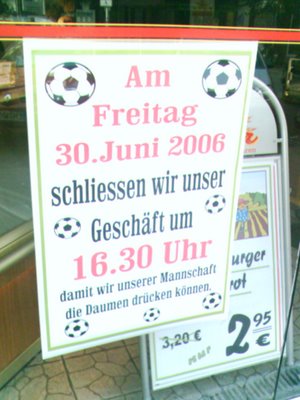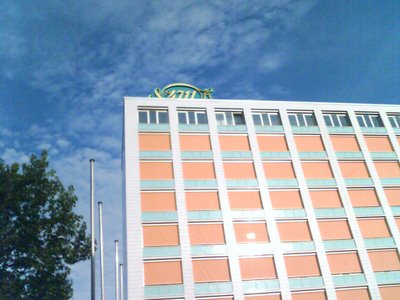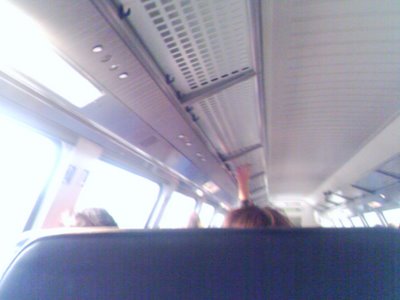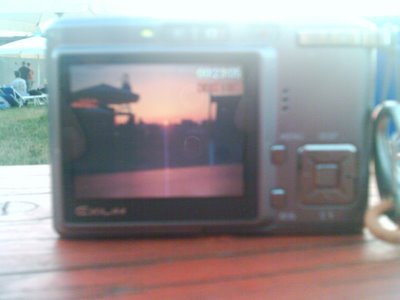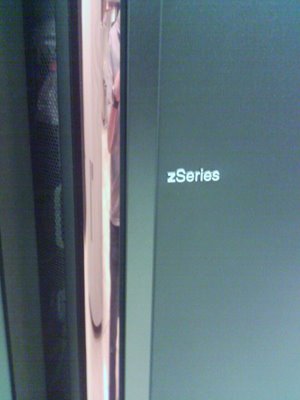
2006-12-15
2006-12-09
2006-11-30
2006-11-14
MAYDAY Workshop 2007
Der Termin des MAYDAY-Workshops 2007 steht nun fest.
Der MAYDAY-Workshop soll uns ermöglichen, in einer intensiven Auseinandersetzung mit der Materie neue Ideen zur Gestaltung zu entwickeln, unseren eigenen Standpunkt zu finden und ggf. um bisher ungelebte Muster zu erweitern / verschieben.
Dabei werden wir einige hochwertige Vorträge erleben, die von international renommierten Kollegen dargeboten werden, und sich konzeptionell in den Themenkreisen "Ravegestaltung" und "Dorschness" bewegen.
Eine Vertiefung und Reflexion erfolgt im jeweils anschließenden Gesprächskreis durch themenzentrierte Interaktion.
Weitere Infos hier.
Der MAYDAY-Workshop soll uns ermöglichen, in einer intensiven Auseinandersetzung mit der Materie neue Ideen zur Gestaltung zu entwickeln, unseren eigenen Standpunkt zu finden und ggf. um bisher ungelebte Muster zu erweitern / verschieben.
Dabei werden wir einige hochwertige Vorträge erleben, die von international renommierten Kollegen dargeboten werden, und sich konzeptionell in den Themenkreisen "Ravegestaltung" und "Dorschness" bewegen.
Eine Vertiefung und Reflexion erfolgt im jeweils anschließenden Gesprächskreis durch themenzentrierte Interaktion.
Weitere Infos hier.
2006-10-19
2006-10-17
Howto: Making music on a mainframe computer
“Written for pianist Robert Miller, the Chamber Symphony was premiered in Alice Tully Hall in 1977 in a series of Bicentennial concerts of American piano music. Each movement was realized with a different synthesis technique using the resources of the Columbia-Princeton Electronic Music Center, the Columbia University Computer Center, and Columbia’s Nevis Physics Laboratory. The electronic sound for the first movement was created by designing and recording every note separately,then using a grease pencil and ruler to mark the duration of the notes, which would be spliced together. Several stereo tapes made this way were them combined on a 4-track master tape which was later mixed down to stereo again. I was able to create about 5 seconds of sound for each hour I worked in the studio.
The second movement was put together very quickly using a keyboard synthesizer and a 4-channel tape recorder.
By contrast the third movement seemed to take forever to compose and then to realize. In it I was experimenting with an “adaptive canon,” in which the imitating voices were scaled in time to fit in the same sized measure as the leading voice. The leading voice of the canon would shift back and forth between 2/2 and 5/4, creating havoc for the voices that followed. I worked out the durations with a portable calculator and composed the movement during a winter residency at the Yaddo Colony in Saratoga Springs, New York.
When I came back to New York City I began the process of realizing the synthesized sound. Charles Dodge had taught me how to use MUSIC360, a synthesis program written by Barry Vercoe at MIT and based on the original synthesis software born at Bell Labs a decade earlier.
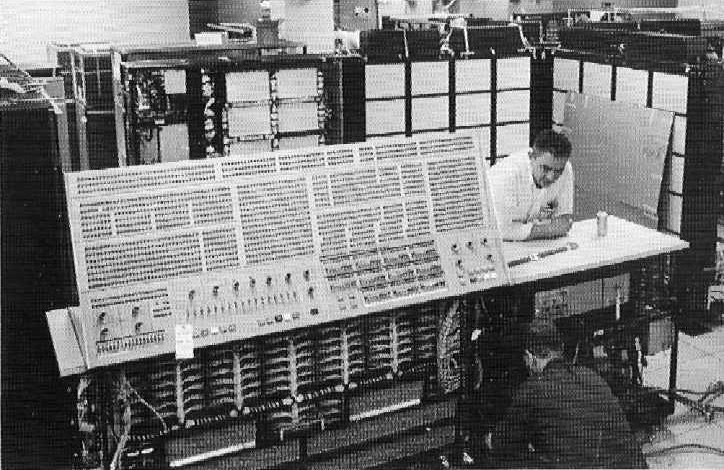
The MUSIC360 program processes two collections of information: a numerically coded “score,” and a group of “instruments” which the composer would build in software from a set of building blocks called unit generators. I would type all this data using a computer terminal in the university computer center then submit the job to the IBM mainframe for batch processing. Sound synthesis is very time-intensive, then requiring about 10 seconds of computer time for each second of finished sound, whereas most of the jobs submitted by students from other departments would complete in thousandths of a second. The mainframe would schedule jobs based on the individual’s account priority and the estimated time for the job, and often this meant that music jobs would be run by the night shift. I would come by the next morning to look over the output and try to analyze the error messages that were almost always there. Then I would edit my files and submit the job again. If the program ran to completion, I would then borrow the data type that held the results of the computation, package it with an audio tape and instruction sheet, then take the package to the Physics department office where a driver would make a daily trip to the high energy physics laboratory in Irvington, New York. The physics labs had an IBM360 computer that could be used for single-user jobs without interruption. Here an operator would convert my data tapes to 4 channel audio tape and the van driver would return the tapes on the next scheduled trip to Manhattan.
When the tape arrived on campus I could finally take it to a tape studio and listen to what had I done. In terms of time and physical resources it was quite an undertaking, and one I found to be richly rewarding.” – Maurice Wright
Quoted from 20th Century Consort
Photo Courtesy by University of Columbia
The second movement was put together very quickly using a keyboard synthesizer and a 4-channel tape recorder.
By contrast the third movement seemed to take forever to compose and then to realize. In it I was experimenting with an “adaptive canon,” in which the imitating voices were scaled in time to fit in the same sized measure as the leading voice. The leading voice of the canon would shift back and forth between 2/2 and 5/4, creating havoc for the voices that followed. I worked out the durations with a portable calculator and composed the movement during a winter residency at the Yaddo Colony in Saratoga Springs, New York.
When I came back to New York City I began the process of realizing the synthesized sound. Charles Dodge had taught me how to use MUSIC360, a synthesis program written by Barry Vercoe at MIT and based on the original synthesis software born at Bell Labs a decade earlier.

The MUSIC360 program processes two collections of information: a numerically coded “score,” and a group of “instruments” which the composer would build in software from a set of building blocks called unit generators. I would type all this data using a computer terminal in the university computer center then submit the job to the IBM mainframe for batch processing. Sound synthesis is very time-intensive, then requiring about 10 seconds of computer time for each second of finished sound, whereas most of the jobs submitted by students from other departments would complete in thousandths of a second. The mainframe would schedule jobs based on the individual’s account priority and the estimated time for the job, and often this meant that music jobs would be run by the night shift. I would come by the next morning to look over the output and try to analyze the error messages that were almost always there. Then I would edit my files and submit the job again. If the program ran to completion, I would then borrow the data type that held the results of the computation, package it with an audio tape and instruction sheet, then take the package to the Physics department office where a driver would make a daily trip to the high energy physics laboratory in Irvington, New York. The physics labs had an IBM360 computer that could be used for single-user jobs without interruption. Here an operator would convert my data tapes to 4 channel audio tape and the van driver would return the tapes on the next scheduled trip to Manhattan.
When the tape arrived on campus I could finally take it to a tape studio and listen to what had I done. In terms of time and physical resources it was quite an undertaking, and one I found to be richly rewarding.” – Maurice Wright
Quoted from 20th Century Consort
Photo Courtesy by University of Columbia
2006-10-12
2006-10-11
2006-10-08
2006-09-20
2006-09-03
2006-08-07
2006-06-25
2006-06-23
Abonnieren
Posts (Atom)




